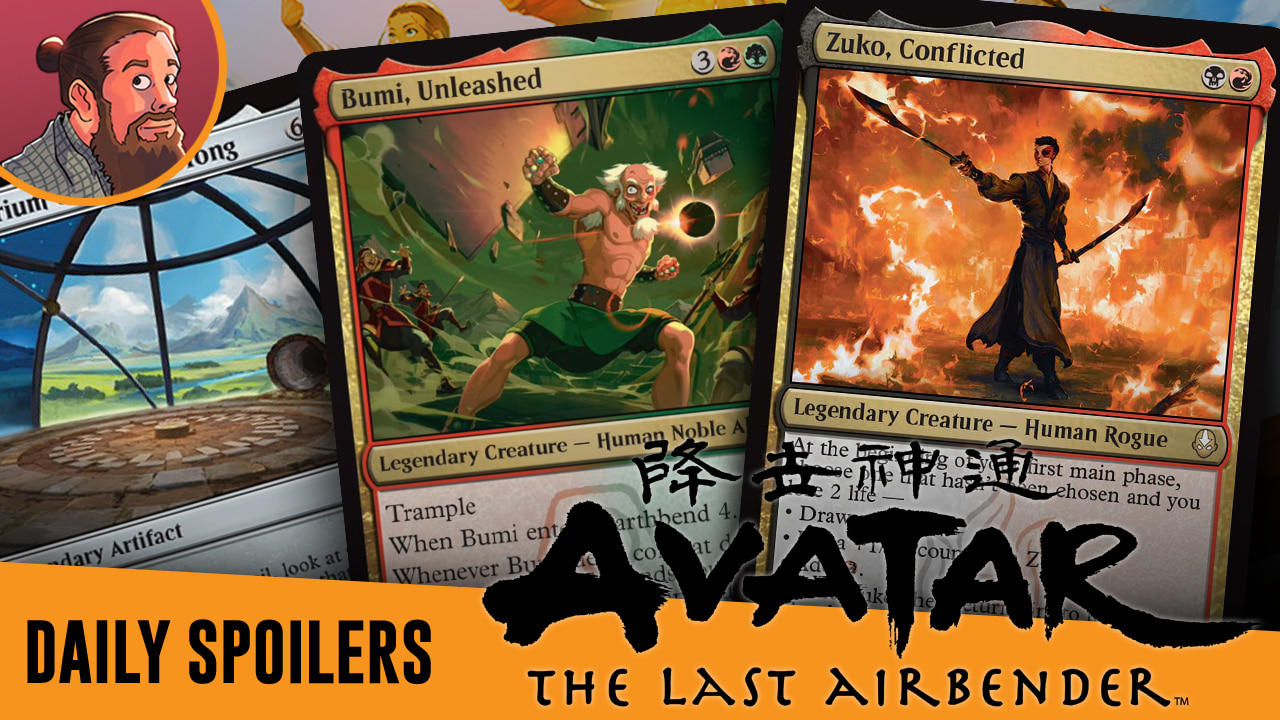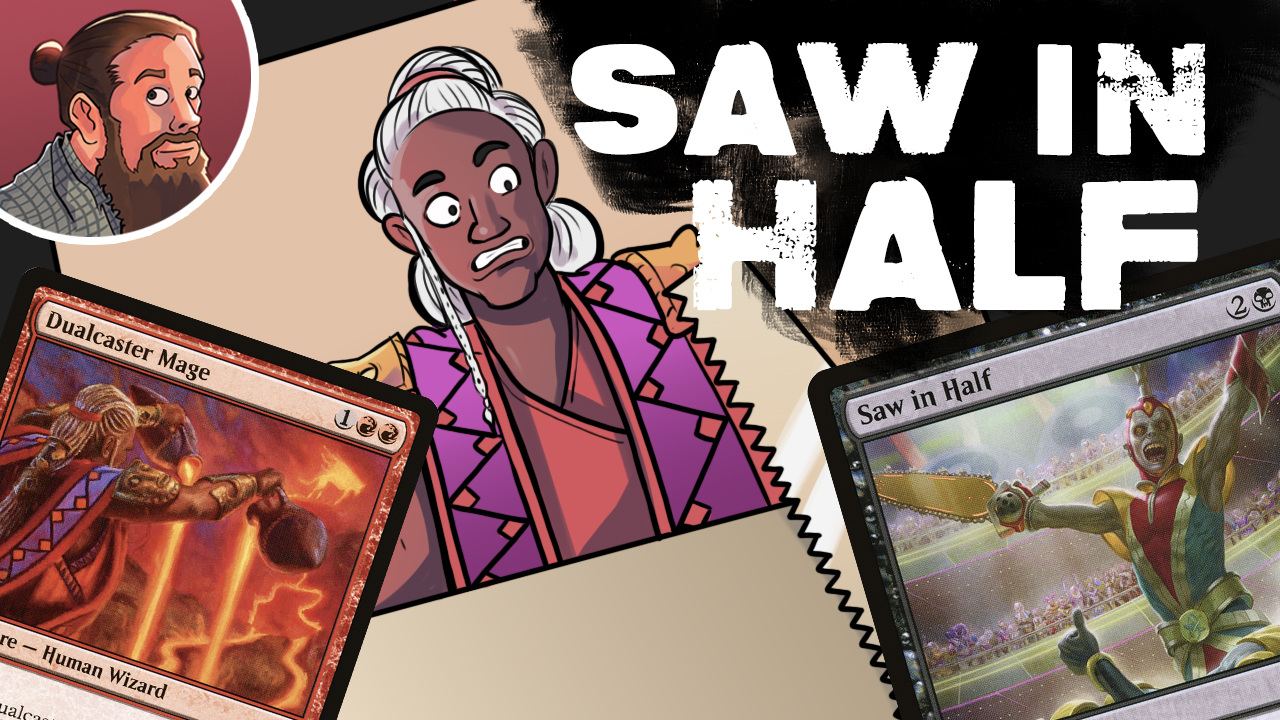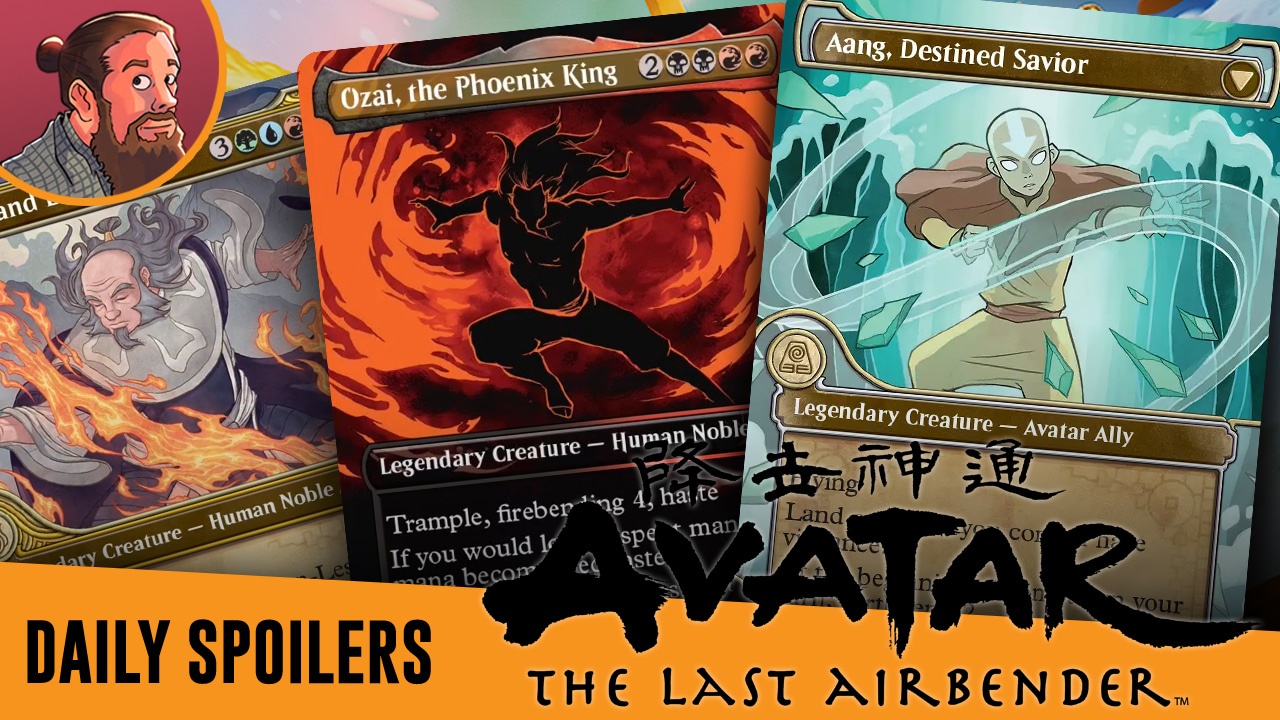Modern Masters 2015 Draft Archetypes, Part 2
Today I'm going to be discussing the 5 enemy color archetypes in Modern Masters 2015. Check out my previous article to learn about the other 5 archetypes based around the ally color pairs. The set releases on May 22, 2015 (May 29 for Magic Online) with multiple Grand Prix kicking off the event. The sooner you start thinking about archetype evaluations, the better prepared you'll be for a Grand Prix or just a casual draft with friends.
In this article, we'll cover the mechanics and ins and outs of the color pairs. For each pair we'll talk about some of the key commons and uncommons for the deck and what its game plan looks like. Let's get started!
White/Black - Soulshift
Spirits
![Hikari, Twilight Guardian [MM2]](http://cdn1.mtggoldfish.com/images/gf/Hikari%252C%2BTwilight%2BGuardian%2B%255BMM2%255D.jpg)
![Waxmane Baku [MM2]](http://cdn1.mtggoldfish.com/images/gf/Waxmane%2BBaku%2B%255BMM2%255D.jpg)
![Nameless Inversion [MM2]](http://cdn1.mtggoldfish.com/images/gf/Nameless%2BInversion%2B%255BMM2%255D.jpg)
![Thief of Hope [MM2]](http://cdn1.mtggoldfish.com/images/gf/Thief%2Bof%2BHope%2B%255BMM2%255D.jpg)
Pay attention to your mana costs to try to enable Soulshift chains. At common there's Scuttling Death into Moonlit Strider into Thief of Hope into Nameless Inversion. Remember that Soulshift cares about converted mana cost X or less so if you have gaps in the chain, that's ok too.
Arcane Spells
![Otherworldly Journey [MM2]](http://cdn1.mtggoldfish.com/images/gf/Otherworldly%2BJourney%2B%255BMM2%255D.jpg)
![Death Denied [MM2]](http://cdn1.mtggoldfish.com/images/gf/Death%2BDenied%2B%255BMM2%255D.jpg)
![Devouring Greed [MM2]](http://cdn1.mtggoldfish.com/images/gf/Devouring%2BGreed%2B%255BMM2%255D.jpg)
![Waking Nightmare [MM2]](http://cdn1.mtggoldfish.com/images/gf/Waking%2BNightmare%2B%255BMM2%255D.jpg)
Ignoring Devouring Greed for a moment, each of the other three spells is perfectly fine to include in your deck without any synergy at all. When you add in the bonuses you get for Arcane spells, these spells become a lot more valuable. While Devouring Greed is certainly bad if you don't have Spirits, it can provide important reach in a deck that is built around it.
White/Black's only real rare or mythic (not including the multicolored one below) that specifically incentivizes you to be in this archetype is Long-Forgotten Gohei.
The multicolored cards for this color combination are Ghost Council of Orzhova and Restless Apparition which fit into the archetype perfectly and Pillory of the Sleepless, which is a nice Pacifism that occasionally doubles as a win condition.
Overall the archetype appears to contain a lot of individually powerful cards, but it may take some skill as well as drawing cards in the right order to make it as potent as it looks like it should be. This archetype, more than others, appears to have more of its key cards at common which means picking up multiples of important cards should be possible. Getting two or more Thief of Hopes going at the same time sounds like an absolute beating.
Blue/Red - Elementals
Elemental creatures
![Aethersnipe [MM2]](http://cdn1.mtggoldfish.com/images/gf/Aethersnipe%2B%255BMM2%255D.jpg)
![Air Servant [MM2]](http://cdn1.mtggoldfish.com/images/gf/Air%2BServant%2B%255BMM2%255D.jpg)
![Cloud Elemental [MM2]](http://cdn1.mtggoldfish.com/images/gf/Cloud%2BElemental%2B%255BMM2%255D.jpg)
![Spitebellows [MM2]](http://cdn1.mtggoldfish.com/images/gf/Spitebellows%2B%255BMM2%255D.jpg)
Blue and Red's creatures include some evasive flyers, some weird cards like Soulbright Flamekin, and the customary creatures with spell effects as seen with the two Evoke creatures.
Elemental synergy
![Wings of Velis Vel [MM2]](http://cdn1.mtggoldfish.com/images/gf/Wings%2Bof%2BVelis%2BVel%2B%255BMM2%255D.jpg)
![Blades of Velis Vel [MM2]](http://cdn1.mtggoldfish.com/images/gf/Blades%2Bof%2BVelis%2BVel%2B%255BMM2%255D.jpg)
![Incandescent Soulstoke [MM2]](http://cdn1.mtggoldfish.com/images/gf/Incandescent%2BSoulstoke%2B%255BMM2%255D.jpg)
![Smokebraider [MM2]](http://cdn1.mtggoldfish.com/images/gf/Smokebraider%2B%255BMM2%255D.jpg)
Incandescent Soulstoke and Smokebraider make the only two non-rare cards that actually care about the Elemental part of Blue/Red Elementals. At least they do a good job though: the uncommon provides an anthem effect and can cheat in Spitebellows for cheap, and Smokebraider is almost better than [[Shaman of Forgotten Ways] (the Dragons of Tarkir bomb mythic) when you get enough Elementals in your deck.
Rares and mythics that would make you want to try this archetype include Guile, Thunderblust, and, if you're a little crazy, Horde of Notions. It's worth noting that Kiki-Jiki, Mirror Breaker and Splinter Twin are great money picks but don't have any infinite combo pieces in the set like Deceiver Exarch or Pestermite. You can still combo them with Aethersnipe and Mulldrifter for non-infinite value though. I also want to try a Temur deck where I can put Splinter Twin onto a Mystic Snake.
Blue/Red's multicolored cards are Electrolyze, a great value card; Niv-Mizzet, the Firemind, the card-drawing Dragon; and Shrewd Hatchling, which works nicely with cheap spells but is weak to opponents who can Proliferate to power it down.
This archetype doesn't look particularly well supported and will probably have to rely more on the power level of its cards as opposed to their synergy. The good news is that Smokebraider and Incandescent Soulstoke are essentially useless outside of the Elemental tribal deck, so as long as you're the only one drafting the archetype, you should be able to pick up all the copies that the table opens.
Black/Green - Sacrifice
Sacrifice fodder
![Dread Drone [MM2]](http://cdn1.mtggoldfish.com/images/gf/Dread%2BDrone%2B%255BMM2%255D.jpg)
![Reassembling Skeleton [MM2]](http://cdn1.mtggoldfish.com/images/gf/Reassembling%2BSkeleton%2B%255BMM2%255D.jpg)
![Kozilek's Predator [MM2]](http://cdn1.mtggoldfish.com/images/gf/Kozilek%2527s%2BPredator%2B%255BMM2%255D.jpg)
![Tukatongue Thallid [MM2]](http://cdn1.mtggoldfish.com/images/gf/Tukatongue%2BThallid%2B%255BMM2%255D.jpg)
In addition to the sacrifice outlets shown below, Eldrazi Spawn tokens can also be used for their original purpose and sacrificed for mana to cast large spells such as Eldrazi.
Sacrifice outlets
![Bloodthrone Vampire [MM2]](http://cdn1.mtggoldfish.com/images/gf/Bloodthrone%2BVampire%2B%255BMM2%255D.jpg)
![Bone Splinters [MM2]](http://cdn1.mtggoldfish.com/images/gf/Bone%2BSplinters%2B%255BMM2%255D.jpg)
![Plagued Rusalka [MM2]](http://cdn1.mtggoldfish.com/images/gf/Plagued%2BRusalka%2B%255BMM2%255D.jpg)
![Culling Dais [MM2]](http://cdn1.mtggoldfish.com/images/gf/Culling%2BDais%2B%255BMM2%255D.jpg)
In addition to sacrifice outlets, there are a few creatures like Scavenger Drake and Algae Gharial that get more powerful as you sacrifice more creatures.
Rares and mythics that synergize with this color combination are Bitterblossom, Endrek Sahr, Master Breeder, Puppeteer Clique, and Ant Queen. These each have their own unique method of providing fuel for the fire of your assorted sacrifice effects.
The multicolored cards in this pairing are Creakwood Liege, which is great for generating sacrifice fodder; Drooling Groodion, which clears your opponent's board of small creatures while making your attacks a lot more profitable; and Necrogenesis, which can provide Saproling tokens from the goodies in your own graveyard or your opponent's.
This archetype's premise is similar to Green/White Tokens/Convoke: acquire a lot of small creatures. I think Green/White's game plan of buffing those creatures looks generally more consistent than sacrificing them for value. If I were drafting this archetype, I'd probably try to include at least one green Overrun effect for games when I've generated plenty of tokens but my sacrifice outlets just aren't providing a way to close out the game.
Red/White - Voltron
Creatures
![Bloodshot Trainee [MM2]](http://cdn1.mtggoldfish.com/images/gf/Bloodshot%2BTrainee%2B%255BMM2%255D.jpg)
![Kor Duelist [MM2]](http://cdn1.mtggoldfish.com/images/gf/Kor%2BDuelist%2B%255BMM2%255D.jpg)
![Skyhunter Skirmisher [MM2]](http://cdn1.mtggoldfish.com/images/gf/Skyhunter%2BSkirmisher%2B%255BMM2%255D.jpg)
![Sunspear Shikari [MM2]](http://cdn1.mtggoldfish.com/images/gf/Sunspear%2BShikari%2B%255BMM2%255D.jpg)
Red/White has a large selection of "Voltron" creatures that benefit greatly from being powered up. Both colors have a large selection of first strike and double strike creatures which get much more powerful when their power is increased. White also has creatures that benefit specifically from being equipped which is helped by the presence of Taj-Nar Swordsmith. This Equipment subtheme is shared somewhat with White/Blue, the Affinity/Metalcraft archetype.
Creature enhancements
![Brute Force [MM2]](http://cdn1.mtggoldfish.com/images/gf/Brute%2BForce%2B%255BMM2%255D.jpg)
![Goblin War Paint [MM2]](http://cdn1.mtggoldfish.com/images/gf/Goblin%2BWar%2BPaint%2B%255BMM2%255D.jpg)
![Copper Carapace [MM2]](http://cdn1.mtggoldfish.com/images/gf/Copper%2BCarapace%2B%255BMM2%255D.jpg)
![Darksteel Axe [MM2]](http://cdn1.mtggoldfish.com/images/gf/Darksteel%2BAxe%2B%255BMM2%255D.jpg)
While combat tricks like Brute Force and Mighty Leap are great with first striking and double striking creatures, I prefer the Equipment options since they're reusable. The common Living Weapon options Flayer Husk and Sickleslicer are nice since if you draw them without drawing creatures, you still have the Germ tokens with which you can attack.
Rares and mythics that encourage assembling the Voltron include Spikeshot Elder, Mirran Crusader, and Sunforger. If you're extremely ambitious, Daybreak Coronet is an option. Be warned however: the only Auras in the entire set that successfully enable it are Goblin War Paint and Splinter Twin (another rare).
Red/White's multicolored cards are Boros Swiftblade and Hearthfire Hobgoblin, which look unassuming but can be deadly with a little help, and Nobilis of War which turns all of your aforementioned double striking creatures (and even your normal creatures) into a force to be reckoned with in the red zone. Sunforger is also somewhat of a multicolored card, but based on the possible targets for its special ability, I think the primary use for it will be to attack for extra damage.
I like the idea of playing aggressive creatures and removal and running over my opponent, and I especially like the idea of killing my opponent's entire team with an equipped Bloodshot Trainee. I get the feeling that I'm going to enjoy drafting this color combination. I think the hardest part about drafting this archetype will be making sure it is open to draft. Almost any player drafting red is going to want to take the efficient removal such as Burst Lightning, and any deck can fit in the colorless Equipment that Red/White desperately needs.
Green/Blue - Graft
Graft creatures
![Aquastrand Spider [MM2]](http://cdn1.mtggoldfish.com/images/gf/Aquastrand%2BSpider%2B%255BMM2%255D.jpg)
![Helium Squirter [MM2]](http://cdn1.mtggoldfish.com/images/gf/Helium%2BSquirter%2B%255BMM2%255D.jpg)
![Novijen Sages [MM2]](http://cdn1.mtggoldfish.com/images/gf/Novijen%2BSages%2B%255BMM2%255D.jpg)
![Vigean Graftmage [MM2]](http://cdn1.mtggoldfish.com/images/gf/Vigean%2BGraftmage%2B%255BMM2%255D.jpg)
Below I mention specific synergies, but even without those tricks Graft creatures combo with each other well. This is due to all of their activated abilities being able to be used on each other.
Graft synergy
![Cytoplast Root-Kin [MM2]](http://cdn1.mtggoldfish.com/images/gf/Cytoplast%2BRoot-Kin%2B%255BMM2%255D.jpg)
![Gnarlid Pack [MM2]](http://cdn1.mtggoldfish.com/images/gf/Gnarlid%2BPack%2B%255BMM2%255D.jpg)
![Thrive [MM2]](http://cdn1.mtggoldfish.com/images/gf/Thrive%2B%255BMM2%255D.jpg)
![Thrummingbird [MM2]](http://cdn1.mtggoldfish.com/images/gf/Thrummingbird%2B%255BMM2%255D.jpg)
Although Blue/Black Proliferate is an archetype all by itself, the Green/Blue deck is going to want blue's Proliferate effects just as much, if not more. These spells are probably going to be in high demand at most draft tables. That's especially true for Tezzeret's Gambit since it can be played in any color deck.
The only Green/Blue rare or mythic that particularly incentives experimenting with +1/+1 counters is Inexorable Tide. Scute Mob probably belongs better in the Red/Green Domain and ramp deck.
The multicolored cards for this color pair are Lorescale Coatl, which takes virtually no work to join the +/1+1 party; Mystic Snake, which is a great value spell; and Plaxcaster Frogling which can protect your creatures while you implement all these Simic shenanigans.
I feel like there's going to be two versions of this deck: The first version is where your opponent can't find removal for Thrummingbird and you destroy your opponent with a roughly equivalent to Citadel Siege level of powerful creatures on the board. The second version is a little more realistic and a little less degenerate, but still has some game and a chance to do neat things. As weird as it is that arguably the most important card in this deck has the keyword of another archetype, I still think this deck is neat. Whether it's good or not remains to be seen.
Wrap-Up
These five archetypes aren't quite as exciting to me as the previous five, but the set still looks interesting. I've updated my list of archetypes and the order in which I'm most excited to draft them. The ones in bold were added most recently. Apparently I don't like Green in this format.
- Blue/Black Proliferate
- Black/Red Bloodthirst
- Red/White Voltron
- White/Blue Affinity/Metalcraft
- White/Black Spirits
- Green/Blue Graft
- Red/Green Domain
- Green/White Tokens/Convoke
- Black/Green Sacrifice
- Blue/Red Elementals
If I had to make power level predictions between the archetypes, I'd use roughly this list but with the caveat that I'm probably overvaluing Proliferate and Voltron and undervaluing Affinity/Metalcraft and Black/Green Sacrifice.
Reach out to me in the comments below or on Twitter @JakeStilesMTG with what you thought about these archetype primers. I'm sure there will be additional archetypes to be discovered and explored, but I think this view gives a great starting point for evaluating where cards fit within the Limited environment.













